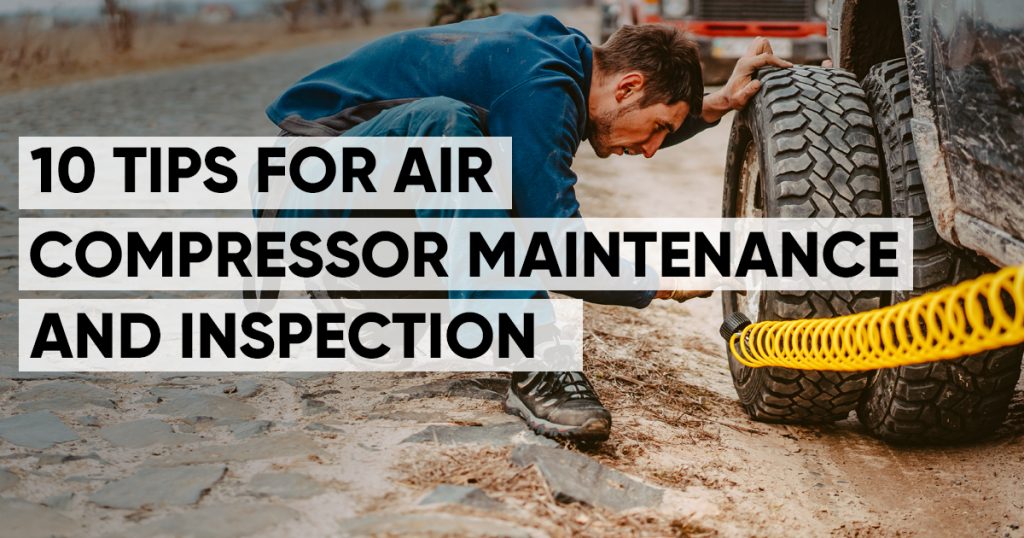Industrial and commercial air compressor failures can cause a great deal of very expensive down-time. Adopting a good air compressor maintenance routine is the key to keeping any make or model of compressor running without interruption.
We’ve assembled a very minimal ‘how to’ guide for air compressor maintenance inspections.
1. Read your air compressor’s manual cover to cover.
This should go without saying, but the first step is always familiarising yourself with the user manual. If it came with a detailed inspection and maintenance guide, even better. If the manual contradicts this guide the manual is almost certainly correct!
2. Tighten all the nuts and bolts.
Air compressors vibrate, and that can work nuts, bolts and other fastenings loose. Test each fastening by attempting to turn it by hand. If it moves, tighten in with a wrench or an appropriate tool. Avoid over-tightening, though.
3. Clean the air compressor’s intakes.
Most industrial and many commercial or hobby uses of a compressor involve dust and dirt. These can accumulate in the air vents, and restrict airflow into the compressor. Clean them on every inspection with a brush or rag.
4. Check the air compressor’s hoses.
The hoses are one of the most vulnerable parts of the air compressor, and the most likely suffer damage. Replace any hoses showing creases or wear.
5. Inspect the air filter
Your air filter should be changed at least annually – or more often if the manual calls for it. However, you should inspect during every air compressor maintenance cycle. A worn filter can pass through contaminants, and a caked filter can restrict airflow. Better to replace it in either case.
6. Drain the moisture tanks/traps
Compressing air causes most of its moisture to fall out, and this is usually collected in s dedicated tank or trap. If this over-fills, the water can find its way into other parts of the air compressor and cause damage or corrosion. See the manual for draining procedures.
7. Clean the fuel tank (if present)
At least once per year (or more often if the manual calls for it), drain the fuel tank, wet-dry vac the inside and check or change the fuel filter. The procedure can vary dramatically from unit to unit, though, so check the manual before you begin.
8. Inspect the shutoff system
Almost all air compressors have systems which shut them down if they exceed tolerances, such as the unit overheating or not receiving enough air. Others protect the compressor from electrical faults or spikes. Check the owner’s manual for the details of your compressor’s safety systems and how to test them.
9. Change the oil (if present)
Those air compressors which use oil lubrication can fail if the oil becomes dirty or loses viscosity due to heat or humidity. Top off the oil supply on every inspection, and change it every 3 months – or more often if directed by the manual. You should also change the oil if the air compressor has been unused for several months.
10. Inspect the air/oil separator
Many air compressors use an oil mist system for internal lubrication. This mist must be extracted from the compressed air before it leaves the machine. You should inspect the air/oil separator filter on every maintenance cycle, and change it after 2000 hours of use – or more frequently, according to the manual.
Make the most of our huge selection…
If you have attempted all of these tips and are still in need for a new compressors. We have a great range of air compressors from 6L to over 200L depending on the usage. Find out more about our huge selection of air compressors and the click the button below

